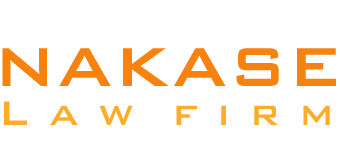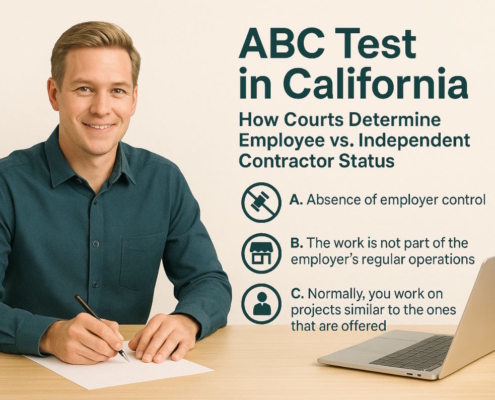How to perform a successful offboarding
When individuals leave a company, offboarding makes ensuring the transition goes smoothly. Putting in place a thorough offboarding procedure reduces legal risks, preserves goodwill with former staff members, and safeguards a company’s reputation.
The process via which an employee leaves the company they worked for is known as offboarding. Although it officially ends the day an employee departs the company, its consequences continue long after they go. It begins the moment a worker submits their resignation.
The leaving employee will usually go through a set of procedures, such as returning corporate property, performing an exit interview, and turning over any outstanding work to other colleagues. The goal is to ensure that the employee departs on good terms and maintains a good opinion of the organization, all while facilitating a seamless transition for all parties involved and tying up any loose ends.
To put it another way, offboarding serves two purposes. One the one hand, it is intended to assist the company in enhancing the employee experience and minimize the effect of the leaving on the company’s operations. However, it also shapes the final perceptions that workers will have of the organization and the public persona they will project.
What distinguishes onboarding from offboarding?
The employee life cycle depends on the successful onboarding and offboarding of employees, which reinforces the employee experience.
Through the onboarding process, new hires are assisted in establishing a sense of belonging to the organization, receiving any necessary equipment, receiving task-specific training, building relationships with their team, and adjusting to their new roles. The goal is to create a strong base that positions individuals, their group, and the entire company for long-term success.
The opposite process, known as offboarding, aids in the orderly conclusion of the employment lifetime. Workers have to give over any business property, log off of the computer system and have their access removed, assign tasks to other colleagues, and bid their coworkers farewell. The goal is to make a stress-free exit.
Why does offboarding matter?
Let’s examine some of the factors that make employee offboarding important and deserving of your time and attention.
- Former workers serve as ambassadors
First impressions matter, but so do last ones.
The employee journey involves a number of crucial “moments that matter.” The first payment, a raise, the offboarding procedure, the first day of work, and enjoyable team-building activities are a few examples.
Employees are far more inclined to speak well of their previous employer if they have pleasant memories of their last days there. This will improve the company’s reputation as an employer and, consequently, draw in more applicants.
- Former workers may return to their previous positions
People depart from organizations for a variety of reasons. Some leave due to a lack of opportunity for career advancement, while others do so due to a lack of flexibility or a better deal elsewhere.
Not all employee departures are due to dissatisfaction with the organization or its culture. So, after working for a while at another company, a few of them return. As a matter of fact, about 40% of workers would think about returning to their previous employer. Those final impressions and a smooth offboarding process are crucial to this.
There are benefits for organizations to rehire former staff members. It’s economical as your “new” person will be up and running more quickly and you know they mesh well with the company’s culture.
- Past staff members are also customers
Your previous workers are frequently your customers as well, just like those you are hiring. In other words, while the hiring process is crucial for ensuring that rejected candidates become satisfied clients, your offboarding procedure is crucial for guaranteeing that your former staff members remain devoted clients.
When a former employee stays loyal to your brand even after departing the company, what better advertisement could there be?
- Preserving knowledge of the organization
Leaving a positive impression on departing employees is just one aspect of offboarding. It also has to do with ensuring that their knowledge is effectively transferred within the organization when they go.
According to Matthew Meadows, CEO and co-founder of WorkStory, a software for performance reviews, knowledge transfer is essential to avoid delays and maintain efficiency, as the leaving employee’s knowledge and institutional expertise are passed on to their replacement or colleagues.
- Security
For security purposes, the right offboarding procedure is essential. 89% of former workers who are now employed elsewhere can still access at least one app from their previous position, according to research. After leaving, more than half of the previous employees’ accounts are still active. Furthermore, 76% of IT executives agree or strongly agree that employee offboarding is a major security threat.
One easy method to reduce this risk is to use your offboarding procedure to make sure departing employees don’t have access to corporate networks and systems after they leave.
- Regulation and compliance
Certain rules and laws regarding offboarding and access may apply to your firm, depending on the region and industry of the business. One crucial component of offboarding is compliance. According to Allyns Melendez, founder of HR Transformed, there are a number of state laws you should be aware of before an employee’s last day. These include the timing of the final paycheck and what time off is paid out.
Having an established procedure in place, such as your offboarding process, makes it much easier to ensure compliance with these regulations and avoid potential legal difficulties.
9-step offboarding procedure
What constitutes a perfect offboarding procedure? Although the specifics will vary depending on the purpose and type of company, there are a few guidelines you can adhere to to make sure everything runs as planned.
- Express gratitude to the departing worker
Express your gratitude to the staff member for all of their hard work and dedication while they were employed by the company, and let them know how much you will miss them. Remember to congratulate them if they are moving forward in their lives or profession.
- Discuss the departure with others
Even while it may be tempting to wait to disclose news about an employee’s exit until you have all the information, it is best to do it as soon as possible to foster transparency and confidence as well as to cut down on business rumors. Discuss the timing and method of sharing this news with the departing employee.
As soon as an employee leaves, managers should notify HR, their department, and their team.
The secret to a successful offboarding procedure is communication. Effective communication guarantees that all parties are in agreement and aware of what to anticipate from the offboarding procedure, advises Sanya Nagpal, Head of Human Resources at Leena.AI, an employee experience platform.
- Assure the transfer of knowledge
It’s critical to retain the departing employee’s knowledge within your organization whether you want to hire a replacement or not.
Verify that you have:
An grasp of the tasks that are prioritized and a clear summary of the everyday duties they completed
Permissions to access all of the files and systems they used
A list of all the individuals they collaborated with, within as well as outside the company
Requesting that someone make a handover paper or video that includes helpful hints for the person who will take over their work is usually a good idea. If you are aware of who will be doing this, the handover can begin right away.
Furthermore, the leaving employee is the best person to automate or integrate tasks that can be incorporated into standard operating procedures. You’ll save money and time by doing this.
Positive offboarding also has the added benefit of allowing you to approach the departing employee for assistance if needed; they will be pleased to assist you if you find yourself lacking in expertise.
- Retrieve business property
Oomnitza conducted a poll and found that 27% of businesses said that inadequate offboarding resulted in the loss of over ten percent of their IT assets.
On the employee’s last day, it’s crucial to request that they turn in any business belongings they may have: credit cards, clothing, mobile devices, laptops, lanyards, badges, or company cars.
More than any other aspect of the work life cycle, offboarding is being neglected, says Nora Burns, who completed her Undercover Project by working as a front-line employee for Fortune 500 companies. She still has name tags that should have been recovered and clothes that no one reclaimed.
Making a list of every asset is a smart approach to make sure you don’t forget anything.
- Restrict access to the systems
According to a Beyond Identity poll, over one in four workers claimed to still have access to profiles from previous positions.
Don’t forget to remove the employee from all systems, including the internal network of the business and any other accounts or programs they may have used. CRM platforms, social media profiles for the business, content databases, and sales dashboard access are a few examples. In order to avoid any security issues, this is an essential step.
- Conduct an exit interview
When conducted correctly, an exit interview can give you a lot of information, including hidden insights on the strengths and weaknesses of your company and suggestions for how to strengthen it.
An exit interview usually consists of a private meeting between the departing employee and a member of the HR team. Consider every comment carefully, and keep in mind that the departing employee’s impression of you as an employer will be greatly influenced by their final interview.
During the meeting, you could pose the following possible exit interview questions:
- Why did you choose to leave?
- What aspects of your job here would you change?
- What else might we have done to keep you?
- How did you and management get along?
- What characteristics should we seek in your replacement?
- What actions are we not taking that would improve the culture of our organization?
- Would you suggest our business to friends and family looking for work?
- Revise your organizational diagrams
Update your directories and organizational charts after an employee leaves.
Provide the information of the successor, if any; if not, provide the information of the person who will take over. This also holds true for company websites and brochures, and it can help to avoid a great deal of (internal) confusion.
- Make final benefit and payment arrangements
In the same way that some businesses neglect to remove departing employees from their systems, occasionally they also neglect to remove them off payroll.
Verify that your Payroll or Finance department is handling the final payment procedure, even though this feature is included into the majority of payroll systems. Give them all the information they require, such as the employee’s termination date, notice period, any potential paid holidays, and any other pertinent information, to make this process easier.
- Keep in communication
There are a number of ways to stay in contact with former workers, including through alumni associations or talent pools. With either choice, you can keep former workers informed about company news and job openings, should they choose to do so. Aluminati and EnterpriseAlumni, two committed producers of corporate alumni software, are excellent choices.
But there are other advantages to keeping in contact. As we just touched on, it can come in handy if you’ve forgotten something that only the departing employee knew or if their replacement requires assistance with a particular assignment.
Keeping in touch has benefits for the former worker as well. For instance, they may require a letter of recommendation or a reference in the future or may become interested in returning if they discover a position that interests them.
Common offboarding errors to avoid
What are some of the typical errors that companies make when offboarding employees? The following are key items to steer clear of doing during your offboarding process:
- Ignoring the final interview: When workers are aware that they are going, they are far more likely to provide feedback that current workers might be too scared to provide. This is helpful and can assist you in improving ineffective areas to lower turnover.
- Absence of a knowledge transfer procedure: It could take months or even years for new hires or other team members to regain important organizational knowledge. Therefore. it’s important to have an efficient knowledge transfer procedure in place.
- Ignoring paperwork: If the required paperwork is not completed, it may lead to noncompliance, fines, and financial losses (such as paying more to departing staff and having trouble recovering the money).
- Neglecting to use an offboarding checklist: HR Transformed’s Allyns Melendez stresses the value of using an offboarding checklist. Offboarding might occur during a vulnerable period. According to Melendez, a business should take care while creating an offboarding checklist to guarantee that every departing employee receives the same treatment and that every item is addressed correctly to maintain process consistency.
- Not developing a procedure for remote offboarding: It’s critical to think about your remote offboarding strategy as more and more workers choose to work remotely or in a hybrid environment. In a remote setting, how will you guarantee knowledge transfer?
- Lack of empathy: It’s crucial to keep in mind that workers don’t always quit on their own volition, and even when they do, there might have been other sensitive factors involved in their decision. Show all departing employees the consideration and decency they merit.
Examples of employee offboarding
- Offboarding at Olo using Asana
The rapidly expanding digital delivery and ordering service Olo, which serves restaurants all over the US, uses Asana to create a seamless onboarding and offboarding process for each employee.
The offboarding procedure is easy, despite the fact that many workers are remote workers. Olo’s People & Culture team follows a checklist to tie up any loose ends, including an exit interview, the last payroll, the removal of computer access, and more, all while upholding the company’s security and protection. Until other staff members are notified of the employee’s leaving, their departure stays private in the system.
This guarantees the departing employee a smooth and professional transition until their last day.
- Parker Drilling’s ServiceNow offboarding process
Parker Drilling once offered an offboarding service that was paper-based and involved a lot of manual administrative labor. Since moving to ServiceNow, a completely automated solution, they are able to keep an eye on their offboarding processes in advance. Alerts and warnings assist them in staying on course, cutting down on completion time, and providing a quick and easy offboarding experience for all parties.
The duration of offboarding has been cut by more than three days. Access to the systems for individuals leaving has been reduced from four days and four hours to one day and seven hours. A 99.6% improvement has been made in failure rates. As a result, automation has saved $200,000 and increased HR productivity by an estimated 275%.
- Fortune 500 business focused on medical breakthroughs
To ensure that there were no delays and that employees had a better experience, the company needed to improve its employee offboarding procedure.
Aufait Technologies developed an automated software program to make the offboarding process more smooth and enjoyable. This makes the document workflow smooth, protects firm data, keeps employees informed at all times, and leaves the door open in the event that they decide to come back.
HR advice
Make sure the offboarding procedure imparts some knowledge to you. There is always a chance to collect data during offboarding.
If the separation was forced, take into account the events that preceded it to make sure it doesn’t happen again. Was a mishire the cause of it? Could the management have given the employee coaching to get back on track earlier and corrected performance? Has the nature of the business changed in a way that will make forecasting the future easier?
Inquire about the reason for the employee’s job search during an exit interview if the separation was voluntary. As you attempt to keep employees on board for a longer period of time, this will provide you with important information into the reasons behind employee turnover inside the company.
Software used for offboarding
You may design an efficient and well-organized offboarding procedure with the use of offboarding software. Although many businesses utilize their HRIS for offboarding, the software solutions below have offboarding modules specifically designed to help you automate and tailor the offboarding process.
- HR Cloud
With a company-branded exit portal, HR Cloud enables businesses to give departing employees the best possible onboarding experience. Their technology guarantees a positive employee experience by automating some offboarding processes and sending necessary documentation, such as final pay summaries, immediately.
- HROnboard
HROnboard offers an offboarding solution in addition to onboarding software. This assists you in organizing your offboarding procedure and making sure that all the essential paperwork, pay data, exit polls, and even an organizational farewell are checked off.
- BambooHR
You can guarantee compliant offboarding with BambooHR by following checklists and using automation to put people before processes. Throughout the leaving process, the software proactively responds to frequently asked questions from employees. It keeps things as straightforward and uncomplicated as possible, which safeguards your employer brand and makes your staff feel valued.
- Talmundo
Talmundo takes charge of the departing worker, his or her manager, and the HR procedures involved. Employees receive an appropriate farewell, human error is reduced through better and streamlined HR procedures, and managers are advised to safeguard team integrity and enable a smooth transition of work and expertise.
- Trello
Trello isn’t a recognized offboarding instrument. That being said, this is an excellent example of a free application you may use to organize your employee offboarding if you don’t have a large budget.
Although the platform is most known for its collaborative project management features, you can also use it to make a checklist and template to aid in employee offboarding.
To sum up
All parties involved can experience less stress and difficulty with a well-organized offboarding interview and procedure. A successful offboarding process saves you money, promotes your employer brand, gives your departing employees a great experience, and safeguards your data and intellectual property.
There has never been a better moment to begin developing an offboarding procedure for your company if you haven’t already.































